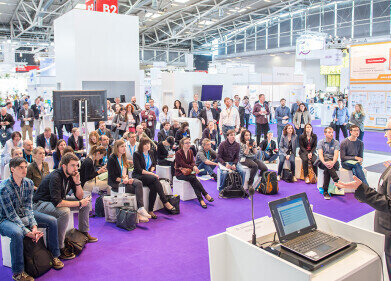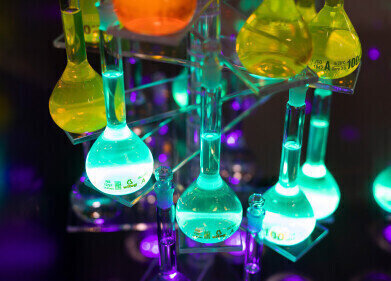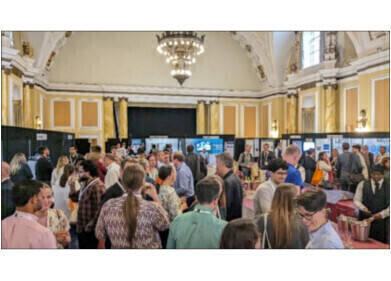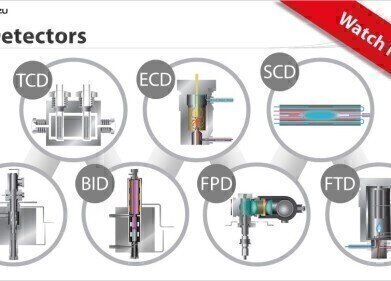Meeting reports and events
A ONE DAY SYMPOSIUM FOCUSSING ON ADVANCES IN NATURAL PRODUCT ANALYSIS
Feb 25 2014
'SEPARATING THE WHEAT FROM THE CHAFF' at SYNGENTA RESEARCH LABS ON 9th APRIL 2014.
Chromatographic & mass spectrometric analysis in vegetable matter, natural and food products will be explored by specialists from a variety of industries.
An exhibition of analytical instrumentation and presentations by leading manufacturers will form an important element of the symposium.
Lecture Titles, Abstracts & Exhibiting Companies
Prof. Pat Sandra - The Research Institute for Chromatography (R.I.C.), Aspects of advanced chromatography in food safety analysis.
Prof Sandra has a wealth of chromatographic and analytical experience speaking with great authority whether it is around techniques or applications.
Research Institute for Chromatography, President Kennedypark 26, B-8500 Kortrijk, Belgium (pat.sandra@richrom.com).
Towards High Peak Capacities in Fluid-based Separation Techniques for Natural Product Analysis
In this contribution, routes to high efficiency and high peak capacity will be discussed from a theoretical and a practical point of view.
The possibilities to increase on peak capacity in one-dimensional liquid chromatography (LC) and supercritical fluid chromatography (SFC) will be addressed. By combining two orthogonal separation mechanisms in a comprehensive approach i.e. LC×LC and SFC×LC unprecedented features allow to separate the most complex natural samples. The robustness of the presented techniques will also be highlighted.
Dr Paul Russell
Science Leader, Chemistry, Safety & Environmental Assurance Centre, Unilever, Colworth Science Park, Sharnbrook, Bedford, UK
Chromatographic and statistical tools to inform the safety risk assessment of natural products (paul.j.russell@unilever.com)Consumer interest is growing in food and cosmetic products which contain botanicals as an ingredient with an established or perceived functional benefit. These materials are often intrinsically linked to traditional medicine cultures throughout the world. Due to their inherent chemical complexity there are substantial challenges in safely commercialising truly efficacious plant derived materials capable of supporting strong functional claims. Chemical understanding of natural products is critical to enable effective safety risk assessment and chromatographic based analytical methods have a key role to play to inform on chemical composition.
Traditional medicine based history of used is well documented for many natural products, but can only be used to support development programmes where both the indication and extract composition are the same as those historically used. This should be confirmed through raw material authentication and holistic fingerprinting approaches, the latter of which we define as a ‘unique visual pattern representing the presence of known and/or unknown characteristic chemical components.
The reductive nature of pharmacopeia marker approaches does not provide sufficient insight into the composition of the complex material as a whole and the concept of a holistic analytical representation also retains respect for the synergistic philosophy of completeness that is embedded in many traditional therapies. Therefore recently there has been increased recognition of the value that chromatographic chemical fingerprinting can bring to naturals research through its use as a quality control tool. However, the effectiveness of this approach is limited by the quality of the fingerprint obtained. Here, examples of novel chromatographic methodology and linking data to chemometric approaches [1] in support risk assessment of partially or heavily refined extracts will be discussed.
[1] Similarity analyses of chromatographic herbal fingerprints: A review; Goodarzi, M; Russell P.J.; Vander Heyden, Y.; Analytica Chimica Acta; 804 (2013); 16-28.
Robin Clery
Natural Products Group, Fragrance Research, Dübendorf, Givaudan Schweiz AG
Impact odourants in natural products-:- How to know what the nose knows
The techniques and applications in detecting and measuring trace flavour and aroma impact materials. Robin was formerly from ICI with a number of years of flavour and aroma analysis experience on their attempts to capture trace components in vivo and in vitro, from natural products from all around the world.
Geoff Kite
Kew Gardens, London
Challenges in natural product characterisation, since one of the aims at Kew is to produce a data bank of all natural products in terms of their characteristic (and unique) chemical composition. He will illustrate his talk with his work on flavonoid analysis by LC and LCMS and the difficulties around correctly identifying these species which often predominate in plant extracts.
Towards the confident identification of simple flavonol O-glycosides by liquid chromatography – mass spectrometry
Dr Geoffrey Kite, Jodrell Laboratory, Royal Botanic Gardens, Kew, Richmond, Surrey TW9 3AB
Flavonoid glycosides are among the most frequently observed components in analyses of aqueous alcoholic extracts of plants by liquid chromatography (LC). They are also the most studied in terms of on-line characterisation by UV spectrophotometry (UV) and serial mass spectrometry (MSn). However, numerous isomeric forms are possible even for relatively simple flavonoid glycosides, and this fact is often overlooked, or assumptions are made, in some studies that ‘identify’ flavonoid glycosides by LC-UV-MSn without reference to authentic standards. Such ‘identifications’ are more correctly expressed as ‘annotations’ of the most likely candidate flavonoid glycoside. Achieving confident identification of simple flavonoid glycosides in the absence of standards remains a challenge. The complexity of the flavonoid glycoside metabolome will be illustrated by examples from legumes containing several isomeric flavonol O-glycosides, and the need for high resolution chromatography to separate isomers will be emphasised. The use of such multi-isomer extracts as tools to improve the confidence in identifying simple flavonol O-glycosides will then be discussed with particular emphasis on recent developments in using MSn of the commonly observed sodiated adduct to discriminate certain disaccharide moieties of flavonol O-disaccharides .
Syngenta’s scientific staff are also supporting the meeting with the following presentations from three of their scientists:
Phil Clarke
How U is Your UHPLC?
UHPLC has been commercially available for around 10 years but understanding for successful operation of the technique is still growing. Critical operational parameters will be discussed and the effect of these on the performance of separations will be demonstrated. Translation of methodology from HPLC to UHPLC and the use of the new generation of sub two micron solid core particles will be used to illustrate some of the challenges that still exist for both instrument manufacturers and practitioners of the technique.
Brian Kemp
Isolating the Needle in the Haystack
The isolation and characterisation of low level impurities is required to comply with the regulations for the registration of pesticides, and also to maintain supplies for use as reference standards in GLP studies. A variety of techniques are used to obtain material containing enriched amounts of these impurities, with the final steps being preparative chromatography
Aniko Kende
Carotenoids in vegetables – they’re good for you! Abstract pending
Jaap De Zeeuw
RESTEK
Considerations for improved measurement of traces in food matrices by minimizing the injection band width using normal and large volume splitless injection
Dr. Patrik Appelblad
Merck Millipore and VWR International Limited
New chromatographic solutions for natural product analysis with a focus on Eastern traditional medication and impurity profiling
The lecture will be based on case study/applications of real products/drugs.
Alan L Northage Senior Staff Scientist Shimadzu UK Ltd
Maximising the Separation and Quantitation of complex food related mixtures using GCMS
Comprehensive GC, GCxGC or “GCSquared” are all terms used to describe a separation system in GC which uses two columns in series containing orthogonal stationary phases. At the point where the two columns join there is located a “Modulator” which repeatedly traps and releases components eluting from the first column onto the second column. The total peak capacity of the system is the product of the two individual peak capacities of the columns. In practise this technique often achieves a component separation increase of a factor of 5 or more. MS is the method of choice when it comes to qualitative and quantitative analysis of these components. This presentation looks at the challenges faced by GCMS in dealing with Comprehensive GCMS data and how a modern Quadrupole analyser excels at this.
|
EXHIBITING COMPANIES INCLUDE Aquilant Scientific |
|
Thames Restek |
|
Thermo Fisher Italy |
|
VWR & Merck Millipore |
|
Gilson |
|
Hichrom Ltd |
|
Genevac Ltd Bruker Shimadzu |
SPONSORSHIP AND EXHIBITION COSTS
GOLD LEVEL SPONSORSHIP £1750
Table top exhibition stand & 20 mins lecture time integrated into the programme
3 free delegate admission places
SILVER LEVEL SPONSORSHIP £1250
Table top exhibition stand & 10 mins lecture time integrated into the programme
2 free delegate admission places
BRONZE LEVEL SPONSORSHIP £750
Table top exhibition stand and 1 free delegate admission place
DELEGATE ADMISSION PRICES
Member of the Chromatographic Society or one of its affiliated societies (BMSS, ELRIG or RSC)
£100
Promotional rate for non-members which includes ChromSoc membership for remainder of 2014
£120
Non member rate
£130
Bona fide student rate
£50
Electronic On-line registration link for delegates
NOTE: VAT at 20% is additionally charged on all prices
TO DISCUSS YOUR SPONSORSHIP LEVEL AND/OR YOUR LECTURE CONTENT PLEASE CONTACT
Dr. Chris Bevan on chris.anne.bevan@gmail.com
TO BOOK YOUR EXHIBITION STAND AND SPONSORSHIP PLEASE CONTACT
Carol McNair
Meeting Makers
Block 4, Unit 4, Kelvin Campus
West of Scotland Science Park
2317 Maryhill Road, Glasgow, G20 0SP
Tel: +44 (0) 141 945 6880
Fax: +44 (0) 141 945 6899
Email: carol@meetingmakers.co.uk WEB: http://www.meetingmakers.co.uk
ORGANISERS
The Chromatographic Society: Founded in 1956, is an internationally connected organisation and UK registered charity devoted to the promotion and dissemination of knowledge on all aspects of chromatography and related separation techniques.
The Chromatographic Society website
www.chromsoc.com will publish future updates of the symposium programme as it develops.
VENUE
Jealott's Hill International Research Centre
Bracknell, Berkshire
RG42 6EY, United Kingdom
Phone: +44 (0)1344 424701
Fax: +44 (0)1344 455629
Jealott’s Hill is a key site in Syngenta’s global Research and Development network. With an 85 year tradition of innovation, it is the company’s largest site for new agrochemical R&D and product support. Many of the world’s most important crop protection products were invented here.
Key activities at Jealott’s Hill include research into discovery of new active ingredients, new formulation technologies, technical support of our product range and Seeds research. The site houses a number of centres of scientific excellence, both chemical and biological, that support our worldwide R&D activities.
For more information about Jealott’s Hill:
Events
Mar 18 2025 Beijing, China
Mar 25 2025 Paris, France
Mar 31 2025 Beijing, China
Apr 02 2025 Saigon, Vietnam
Apr 22 2025 Kintex, South Korea














